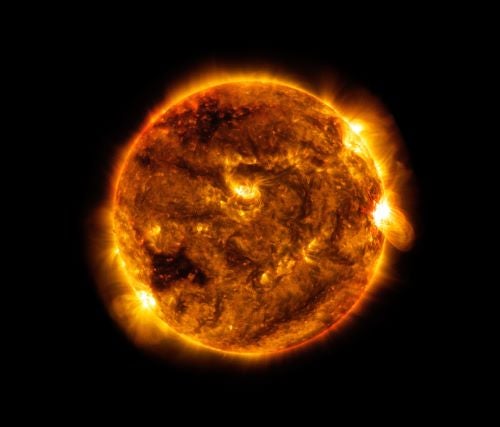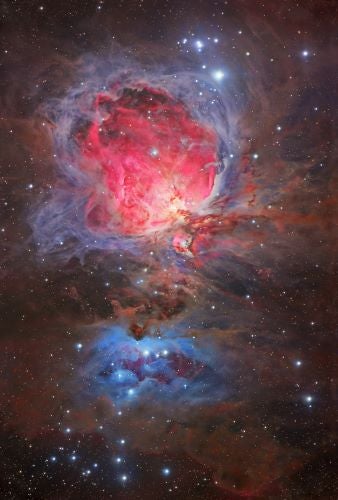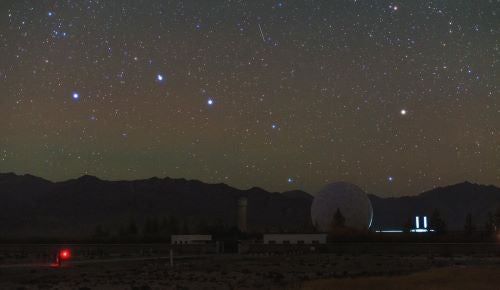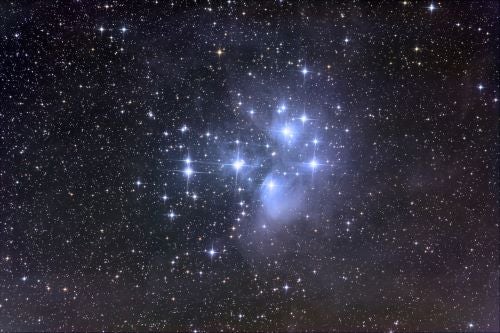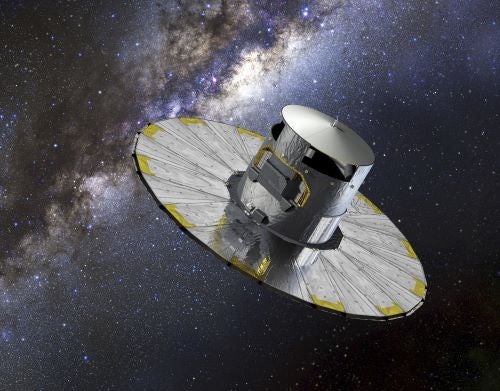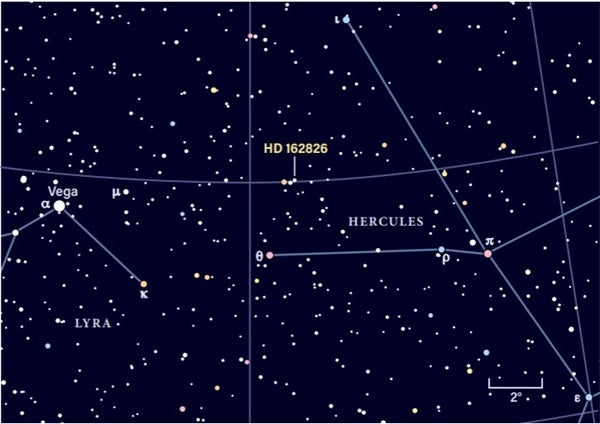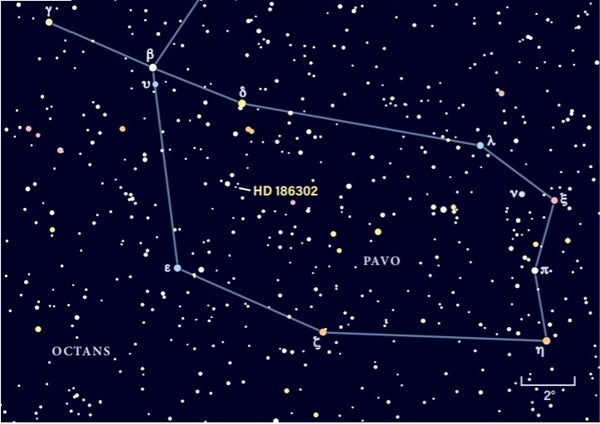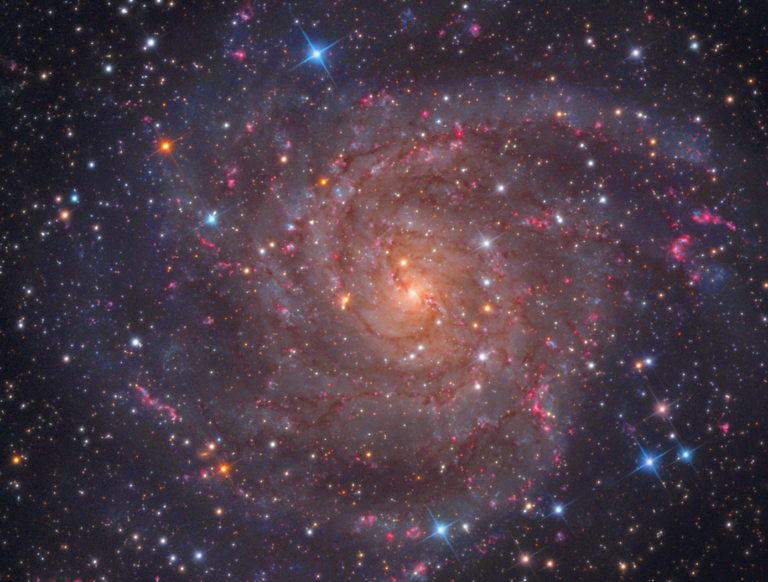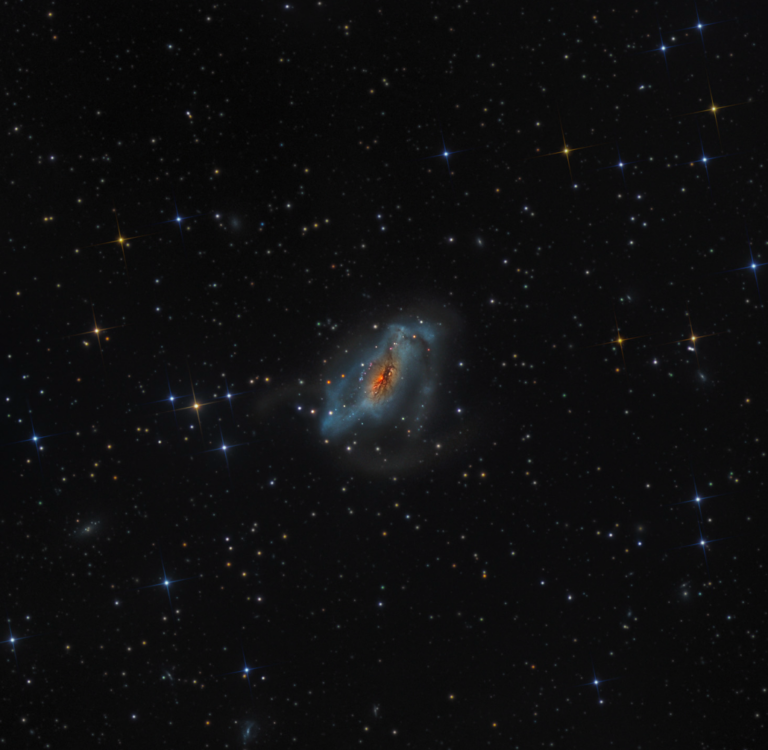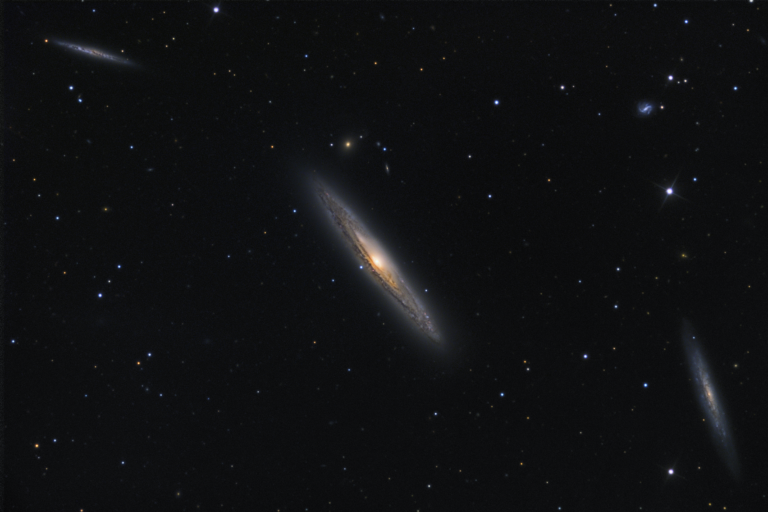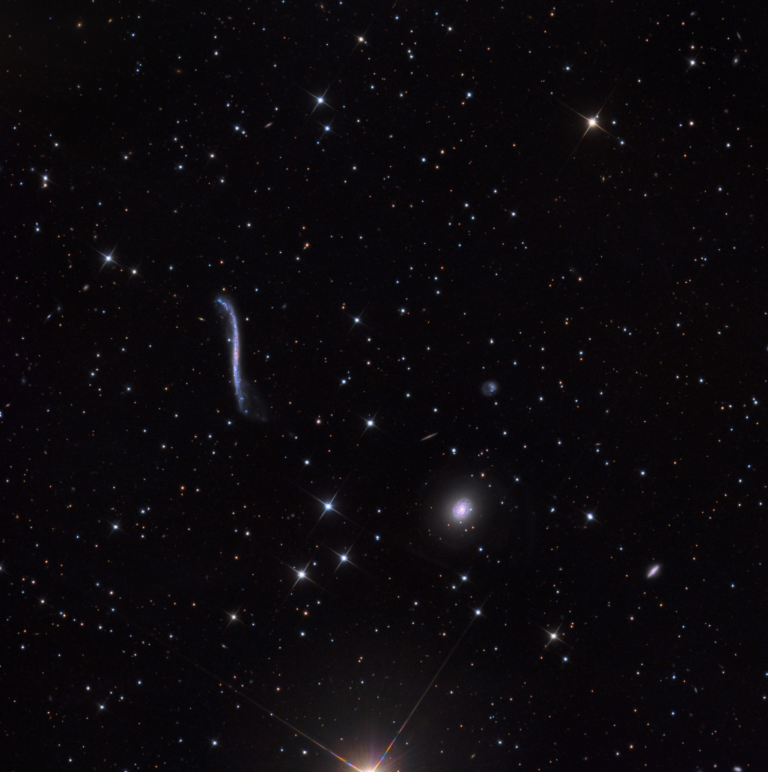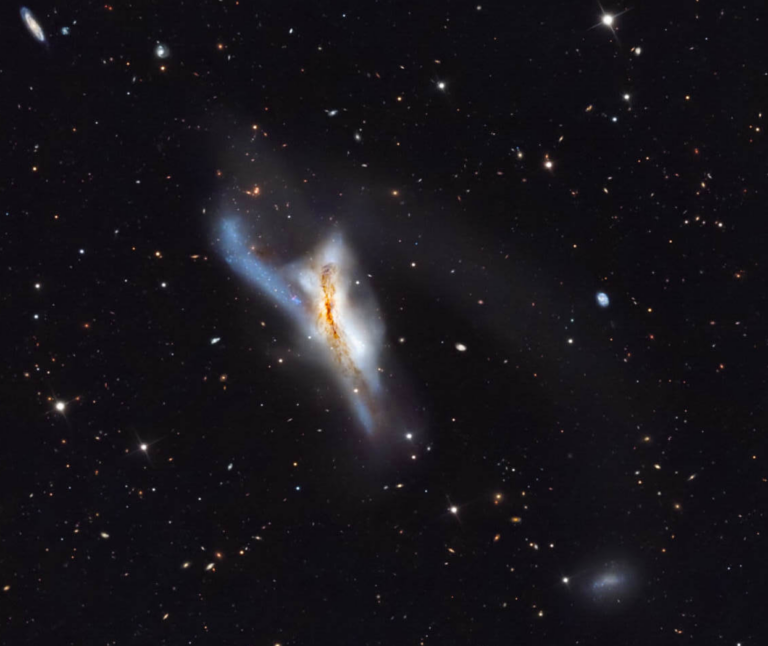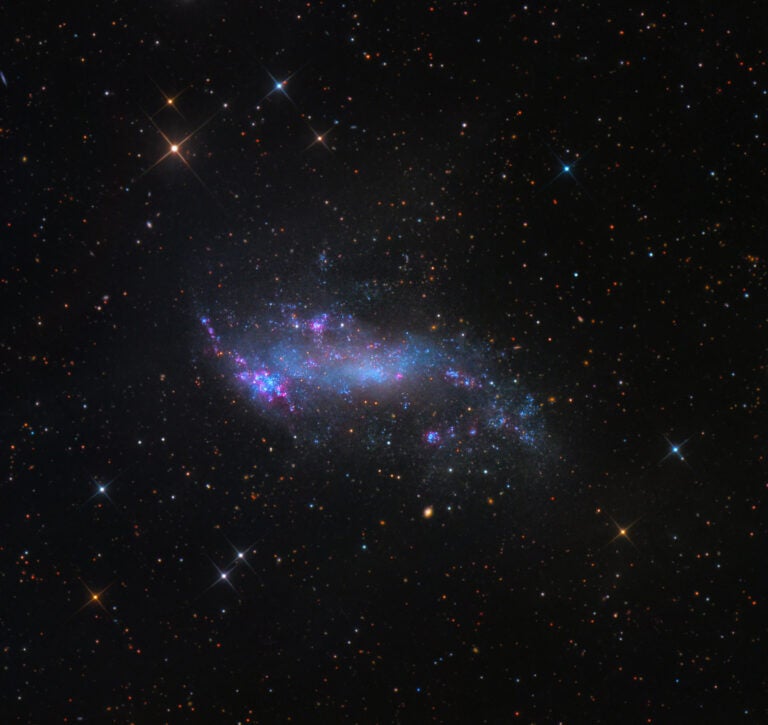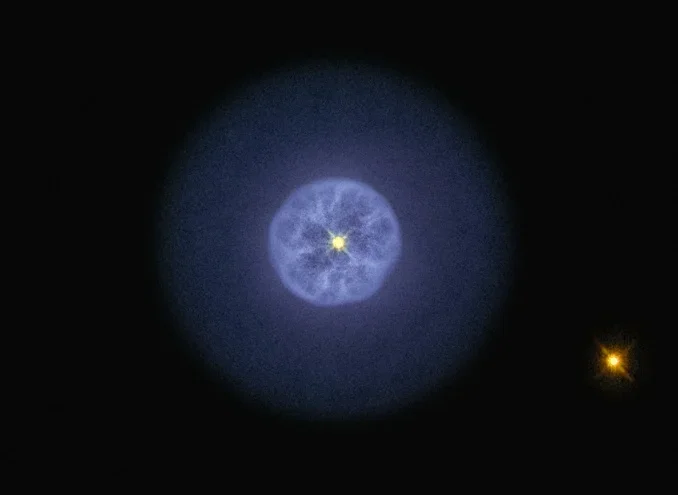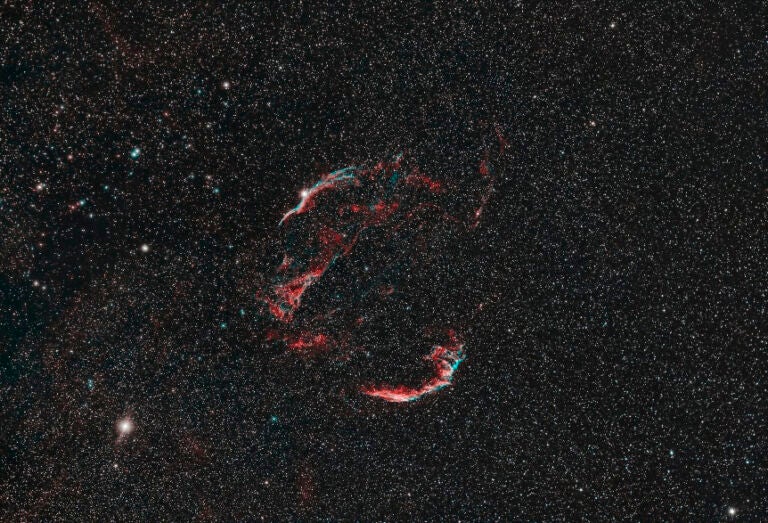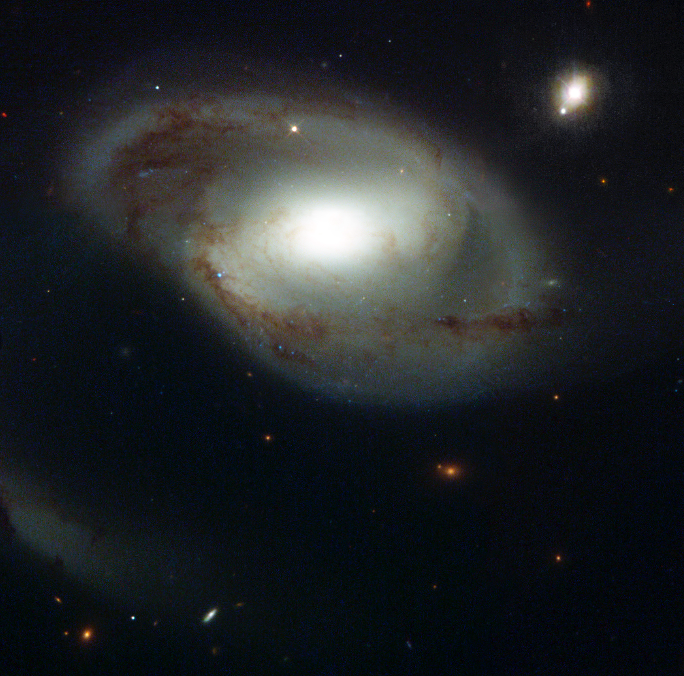The beginning
Although the Sun was born billions of years ago, we know roughly how the process happened by studying “stellar nurseries” we see today, called nebulae. Nebula means “cloud” in Latin, and each consists of interstellar gas, primarily hydrogen and helium with trace amounts of other elements. Many nebulae are inert, with no star formation happening in them, their presence betrayed only by the dark regions they form as they block light from more distant stars. In fact, if these dark nebulae did not exist, the Milky Way in our night sky would be much brighter. On the other hand, nebulae that are home to star formation are positively glowing, and several are so bright you can spot them with the naked eye.
Millions of years before the Sun formed, something disturbed the dark nebula containing the gas that would become our solar system. Astronomers believe they know what caused it: a massive explosion from a dying star, called a supernova.
“A blast wave from a supernova can trigger star formation in the shock front [the leading edge of the explosion] if the material is dense enough,” explains Anna Rosen, an astrophysicist at the Harvard-Smithsonian Center for Astrophysics. The key to this origin is locked in a surprising location: meteorites.
Meteoroids — as meteorites are known when still in space — are small chunks primarily made of iron, nickel, and trace amounts of other materials. The composition of most has not changed since the solar system formed; what’s more, because they are the only part of outer space that can be physically carried into a laboratory on Earth, they are well studied. In examining them, scientists have discovered elements in amounts only possible if a supernova occurred just tens of thousands of years before the meteorites formed.
We see further evidence all around us. The elements in our world (except hydrogen and helium) formed in stars that died before our Sun was born, from the carbon in your cells to the oxygen in your lungs to the iron in your veins. These elements were then part of the material in our parent nebula that ended up forming Earth. As Carl Sagan said, “We are made of starstuff.”
After the supernova’s shock wave passed through the cloud that would become the solar system, the dust and gas began to collapse in on itself due to gravity. More and more material fell onto it, forming a dense core, known as a protostar, that would become the Sun, and a protoplanetary disk of gas that would eventually become the rest of the solar system.
The Sun was not yet shining at this point. A protostar is not yet fusing hydrogen, so no ancient aliens would see our developing Sun, at least in wavelengths of visible light. There would be a lot of heat from all the collapsing gas, however, so the system would emit infrared radiation. Altogether, the Sun probably spent half a million years as a protostar, although accreting gas in the earlier stages could have taken many times longer.
A great example
To study how this process would have occurred, astronomers scrutinize nearby nebulae where stars are being born today. One popular target is the Orion Nebula (M42), located in the middle of the constellation Orion’s sword. Although it is more than 1,300 light-years away, it is such a hotbed of stellar formation that it is visible to the naked eye even under suburban skies. A modest amateur telescope will reveal glowing gas illuminated by four bright stars called the Trapezium. M42 is a huge stellar nursery — astronomers have observed about 700 developing stars in various stages of formation and have counted 2,000 in the innermost 20 light-years. Shocks and bows of gas, formed by intense stellar winds from new stars, ripple through the system.
Despite the hive of activity within a stellar nursery like the Orion Nebula, we don’t expect this stage to last long, astronomically speaking. “Young, massive stars in a nebula inject energy and momentum into the system, and blow material away,” explains Rosen, who studies this feedback. Simulations estimate that in 100,000 years, the gas from the Orion Nebula will be swept away altogether.
When this occurs, a young cluster of stars will remain behind, an example of which — the Pleiades — is also familiar to naked-eye observers. Located in the constellation Taurus the Bull, the cluster is dominated by young, hot blue stars formed within the last 100,000 years.
It is clear from this process that stars do not begin their lives in isolation and, in fact, begin their lives with hundreds or even thousands of companions. But if the Sun’s journey began with thousands of stellar siblings, what happened to the rest of them? And would we recognize those long-lost family members in a galaxy with billions of other stars?
Separation anxiety
The estrangement would have begun like this: From almost the moment the Sun and its stellar siblings formed, they would have begun to drift apart, with each pulled in different directions by the gravitational effects of other stars in the Milky Way. Within a few hundred million years, our tight cluster would become a loose grouping, spreading apart ever more as the years passed. Eventually, you would not know the stars had been part of the same cluster.
A perfect example of this process, familiar to even the most casual stargazer, exists in our night sky: The Big Dipper. The dipper is an asterism, a pattern of stars that is not a constellation. It belongs to Ursa Major the Great Bear. For most constellations and asterisms, the distances to the stars are random, so they’re not related to one other. In the Big Dipper, however, astronomers discovered six of the eight stars (the star in the handle’s bend is an easily seen double) moving in the same direction through space. They call it the Ursa Major Moving Group. These stars formed several hundred million years ago, between 78 and 84 light-years away, and are now spread over an area 30 light-years in diameter.
“Physically nearby stars are not necessarily siblings,” explains Jeremy Webb, an astronomer at the University of Toronto who searches for solar sibling candidates. “Siblings can end up on the opposite side of the galaxy and be spread out quite a bit.”
But just because you separated doesn’t mean you never run into one another again. I graduated high school and college many years ago, and I still randomly run into some of the same few hundred people with whom I attended school in a city full of otherwise complete strangers.
Detailed spectra now exist for hundreds of thousands of stars in our galaxy, so astronomers can compare the elements that appear in them to the abundances in the Sun. Using this method, some have suggested certain stars’ spectra are similar enough to the Sun that they must be long-lost siblings. However, other astronomers remain skeptical, worrying that birth nebulae might not be sufficiently different from one another for such chemical tagging. Are spectra really enough to find such a needle in a haystack?
Sifting the data
Recently, a second way to solve the puzzle came online. Thanks to the Gaia space observatory, astronomers can now study 3D data and obtain precise motions and positions for an astounding 1.3 billion stars in our galaxy.
Launched in 2013 by the European Space Agency, Gaia compiles this impressive catalog using parallax. It takes careful measurements of nearby stars, recording the minute apparent shifts in position against more distant stars. Using measurements six months apart, astronomers can calculate a star’s distance by knowing the size of Earth’s orbit and using a bit of trigonometry. If the star is monitored for years, researchers also can discern the motion of the star across our line of sight.
Gaia is able to take better measurements than are possible from the ground, and its data release in 2018 means astronomers now have the most precise map of the galaxy ever constructed. There have been surprises. For example, in early 2020 astronomers announced the discovery of a gigantic gaseous structure 9,000 light-years long and 400 light-years from the Sun at its closest. Known as the Radcliffe Wave, it is the largest such structure ever seen in the Milky Way.
Armed with the new Gaia data, astronomers have revisited the search for the Sun’s siblings. “We really cast the widest net possible,” explains Natalie Price-Jones, a graduate student working with Webb to find solar siblings. “We’re not looking to reproduce the exact velocity and orbit of the Sun,” she says. That would be impossible. Instead, she says, “we are looking for general parameters and trends in movement. For example, if we know the angular momentum of the Sun, lots of orbits can fit a certain angular momentum.”
In other words, astronomers use Gaia’s orbital parameters to trace a star’s motion backward in time to see if it intersects with the Sun’s.
Studying Gaia’s data is enough to rule out many stars that may be physically close to the Sun, or have similar spectra, but which are unrelated to it. As one such example, for many years astronomers hypothesized that the open cluster M67 in the constellation Cancer may be the parent cluster of our Sun, based on the fact that it is home to 100 stars similar to the Sun with roughly the same age. However, “we have ruled it out as a potential solar birthplace because its orbital properties were completely offset,” explains Webb.
There was just no way to simulate M67 and the Sun’s orbit intersecting 5 billion years ago when the Sun formed, no matter what permutation was used. The University of Toronto team has also discarded several previously suggested solar sibling candidates on the grounds that while they are chemically similar to the Sun, their orbits would never overlap with our own.
A possible sibling
By reexamining stellar spectra combined with the new orbital information, however, the Toronto team discovered a new candidate with the same elemental abundances and orbital parameters as the Sun. Dubbed SS1, short for “Solar Sibling 1,” it is an unremarkable star some 1,100 light-years from us, located in the constellation Cygnus. Looking at the crowded star field, you would never know our Sun and SS1 might be long-lost relatives unless you had the clues provided by modern astronomy at your disposal.
We don’t yet know for sure if SS1 originated in the same birth nebula. But as time goes on, the orbital calculations used to determine whether it can be traced back to the same birthplace as the Sun should improve.
It’s a big galaxy out there. And although we appear to be alone, one day we’ll know which stars we began our journey with, and where we’ve adventured

